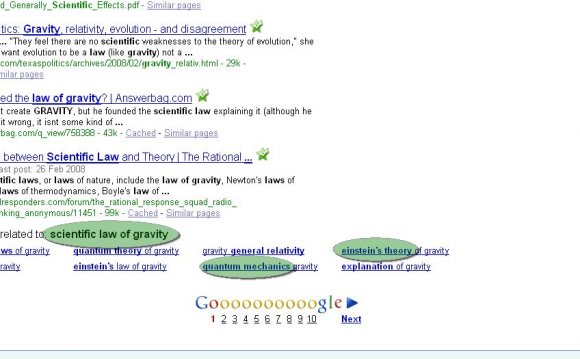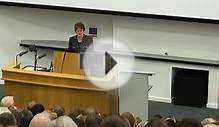
[Textbook disclaimers are down, but not out. This satirical look at "only a theory" disclaimers imagines what might happen if advocates applied the same logic to the theory of gravitation that they do to the theory of evolution.]
All physics textbook should include this warning label:
This textbook contains material on Gravity. Universal Gravity is a theory, not a fact, regarding the natural law of attraction. This material should be approached with an open mind, studied carefully, and critically considered.The Universal Theory of Gravity is often taught in schools as a fact, when in fact it is not even a good theory.
First of all, no one has measured gravity for every atom and every star. It is simply a religious belief that it is "universal".
Secondly, school textbooks routinely make false statements. For example, "the moon goes around the earth." If the theory of gravity were true, it would show that the sun's gravitational force on the moon is much stronger than the earth's gravitational force on the moon, so the moon would go around the sun. Anybody can look up at night and see the obvious gaps in gravity theory.
The existence of tides is often taken as a proof of gravity, but this is logically flawed. Because if the moon's "gravity" were responsible for a bulge underneath it, then how can anyone explain a high tide on the opposite side of the earth at the same time? Anyone can observe that there are two — not one — high tides every day. It is far more likely that tides were given us by an Intelligent Creator long ago and they have been with us ever since. In any case, the fact that there are two high tides falsifies gravity.
There are numerous other flaws. For example, astronomers, who seem to have a fetish for gravity, tell us that the moon rotates on its axis but at the same time it always presents the same face to the earth. This is patently absurd. Moreover, if gravity were working on the early earth, then earth would have been bombarded out of existence by falling asteroids, meteors, comets, and other space junk. Furthermore, gravity theory suggests that the planets have been moving in orderly orbits for millions and millions of years, which wholly contradicts the Second Law of Thermodynamics. Since everything in the Universe tends to disorder according to the Second Law, orderly orbits are impossible. This cannot be resolved by pointing to the huge outpouring of energy from the sun. In fact, it is known that the flux of photons from the sun and the "solar wind" actually tends to push earth away.
INTERESTING VIDEO











